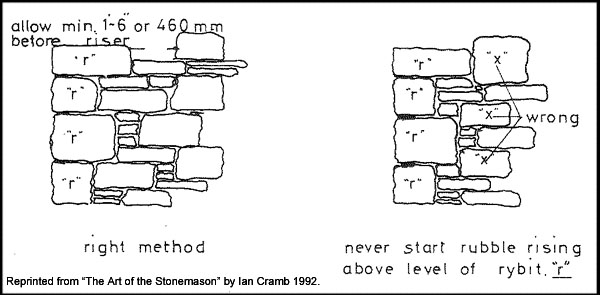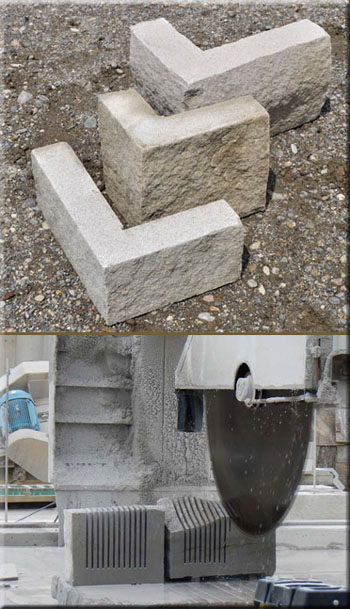Quoins are large rectangular stones used as cornerstones in traditional stone buildings. They provide structural support for buildings, particularly where rubble or fieldstone is used for the rest of the stonework. They also became an important aesthetic element in traditional stonework. As shown in the examples below, quoins are commonly more rectangular and more carefully finished that the stone used in the rest of the walls.
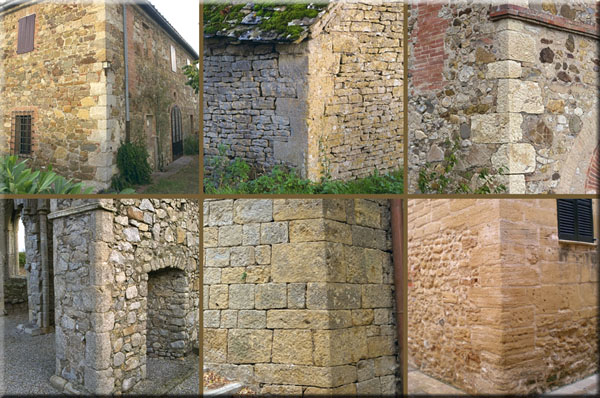
Quoin photos clockwise from top left: Tuscan villa near Siena, Italy; ancient barn in Cotswolds, England; fieldstone building near Chianti, Italy; limestone quoins in Palma, Majorca, Spain; Limestone quoins in wall surrounding Volterra, Italy; granite quoins in ancient church near Dublin, Ireland.
Modern Quoins
Not every type of stone is appropriate for making quoins. Some stones don’t come in large enough sizes, whereas others can’t be worked into the desired shapes for quoins. The Cortona Limestone, shown at right, is quarried in large blocks that work well for making quoins. In this Tuscan-style project, the quoins have the same chopped faces as the rest of the stone in the wall. The terra cotta bricks mixed with the quoins emulate a common feature in Tuscan buildings.
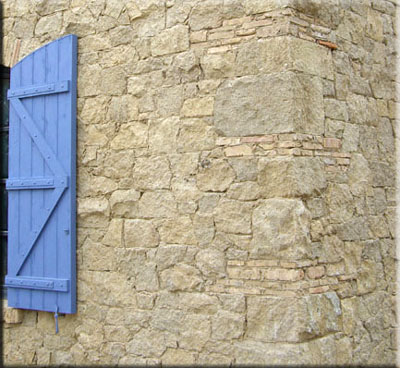
Sometimes stonemasons, architects, and designers want the quoins to appear more finished than the rest of the stone. In the example shown below, the Cortona Limestone quoins have a sawn face. The different surface texture makes the quoins stand out dramatically from the rest of the wall.
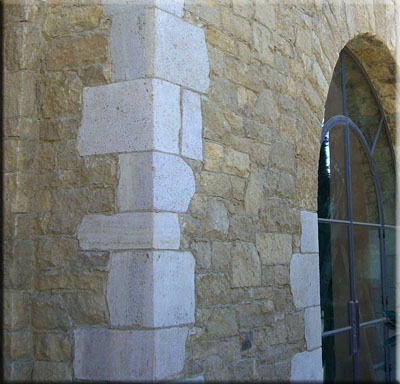
Gutted Quoins
Most modern masonry walls are six-inch-thick stone veneers over block or framed walls. Designers sometimes want the quoins to be larger to make the stone walls appear thicker than they actually are. In this case, large quoins can be “gutted”, as shown below, so that they wrap around the corner of a 6 inch masonry wall.
Making gutted quoins is a labor- and equipment-intensive process, as shown for the Wilkeson Sandstone above. Consequently, gutted quoins are an expensive addition to a masonry project.
Ungutted Quoins
To get the traditional appearance without the added expense of gutted quoins, most stonemasons will sort out the larger rectangular blocks to be used as corners. However, often times there won’t be enough large rectangular stones to make into quoins. In this case, a different stone can be used for the quoins. In the example shown below, the quoins were made from Frontier Sandstone,whereas the rest of the stone in the wall is Homestead Fieldstone.
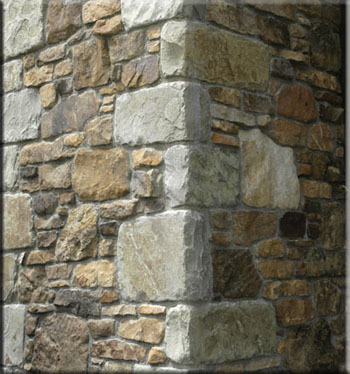
Basic Masonry Rules for Quoins
There are just a few simple stonemasonry rules for setting quoins in a wall. The diagram below, reproduced from “The Art of the Stonemason,” shows that stones immediately next to the quoins (or “rybits” as identified here) should not break the horizontal line of the quoin for a distance of at least 18 inches. This rule was broken in the center right of the photo above, and it detracts from the look of the quoins.
